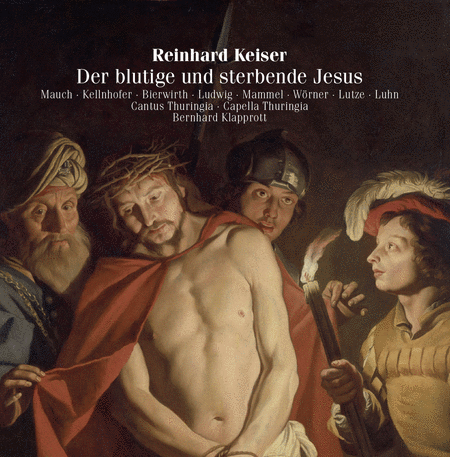Keiser: Der blutige und sterbende Jesus
Details
Description
SKU: NX.555259-2
By Alexander Bischoff, Anna Kellnhofer, Anne Bierwirth, Carsten Kruger, Dominik Worner, Dorothea Wagner, Florian Sievers, Hans Jorg Mammel, Judith Devise, Matthias Lutze, Mirko Ludwig, Monika Mauch, Oliver Luhn, Sonke Tams Freie, Stefan Kunrath, and Thomas Riede. By Reinhard Keiser. Classical, Chant. Classical. CD. CPO #555259-2. Published by CPO (NX.555259-2).UPC: 761203525928. Conducted by Bernhard Klapprott.
Reinhard Keiser's Der blutige und sterbende Jesus is not only the very first German Passion oratorio but also a highly suspenseful contribution to the Passion season. Lost for many years, it is now available for listening here in the revised version of 1729. The dramatic and musical design of Keiser's work is astonishing. As in the Italian oratorio type that gained currency after 1700, there is no Evangelist or other narrator, which means that the work has a purely dramatic structure. Even though Keiser's librettist Christian Friedrich Hunold, whose pseudonym was Menantes, did not cite any one of the four Evangelists word for word in his adaptation of the Passion narrative, it is quite evident that the poetic elaboration is (primarily) modeled on Luther's translation of the Gospel of Matthew. As might be expected, Hunold and Keiser based their work on the dramatic means of the opera typical of their times while working on the one hand with contrasts between short, often homophonic five-part choirs of the two different groups of participants and on the other hand with multipart, interior monologues by the main characters. The great number of very highly expressive arias and ariosi, each of which has its own very special character, produced a tightly woven fabric that, far from the traditional Kantorei tradition, forms a link to the modern music of its times. Keiser's oft-praised instrumentation artistry is shown here in his innovative, effectively and enthrallingly varied tone-color combinations in the orchestra. His talent for the clear delineation of a musical scenario with only a single accompaniment voice is legendary.

 Share
Share